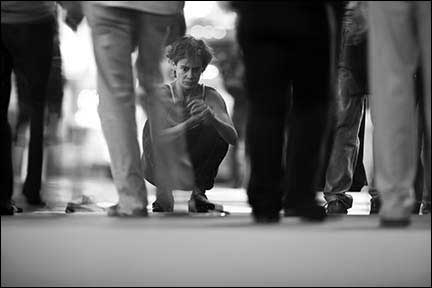
Jeanne had long harbored a crush on the short Indian man who played squash at her gym. For more than a year she tried to relax and talk to him. But she usually just stared at him while telling herself “you know, you should really say something. Like, ‘Hello.’”
One time, she did manage to have a conversation with him. He was smiling, friendly, and seemed happy to see her. She became so tense that she could barely think. For reasons she can’t recall, she abruptly blurted out that he should just go see a doctor about his knee. He excused himself and walked away.
The man tried to talk to her a few more times, but each time, Jeanne was tense and terse, and each time, he backed away. Jeanne saw him one more time at the squash court, and desperately wanted to explain how sorry she was and how much she liked him. But she couldn’t, and he left.
That was five years ago. Just recently, they again ran into each other at the gym. He quickly left while his brother gave her dirty looks.
“You just want to cry from how tragic it is,” she says. “Even now, I can’t even say hello.”
Speechless
Today, after 11 years of therapy, numerous self-help books, and finally, a four-month class on identifying and working through anxious thoughts, Jeanne, who asked that her real name not be used out of concern for her privacy, is buoyant as she shows me around her Brooklyn neighborhood. At first she seems unfazed by the crowd in the café we head to, but after we find a table in the back, she gives stares at anyone who walks by or sits next to us. She pushes my tape-recorder behind my cappuccino and out of her view, and continues talking.
In her 40s, with brown hair and a soft, even voice, she sometimes shivers when talking about her boss or the way her chest tightens when she thinks about speaking at a business meeting. Other times she beams, as she talks about how she can finally email someone a question without being shackled by the worry that all she will get in response is a “no.”
Five million Americans are affected by social anxiety disorder each year, according to the National Institute of Mental Health. The American Psychiatric Association defines the disorder as an intense fear of a potential negative judgment, usually in a public situation. Potential triggers could be anything from eating in public or using a public restroom, to talking to strangers or having sex.
The causes and severity of apprehension vary from individual to individual, but researcher Richard G. Heimberg, author of Social Phobia: Diagnosis, Assessment and Treatment, says that up to 13 percent of the population has some form of the disorder.
Many people are shy around those they don’t know, and get nervous when they have to speak in public. For those with social anxiety disorder, these feelings reach irrational levels. Their fears are so intense that they get nauseous while thinking of them and live unsatisfying lives in an effort to avoid them.
In Jeanne’s case, attacks revolved around dating, job interviews, speaking in public, talking to authority figures, and a myriad of other situations in which she could be looked down upon. She would frequently plan her life around avoiding her fears, often at the expense of her true desires, such as when she attended a college in the city with dreams of becoming a psychiatrist. The school wasn’t her ideal choice, but because an interview, or even a personal essay, was too frightening to consider, her options were limited.
Once enrolled, Jeanne realized that she couldn’t take upper-level psychology classes without giving presentations. Plus, her family didn’t really support the idea of her studying psychology in the first place, and she began to think that people she’d work with as a psychiatrist probably wouldn’t like her anyways. Eventually, she ended up in the history department.
Her problems continued after graduation, as Jeanne found herself terrified of changing situations, even ones that made her unhappy, for fear of new situations that could leave her exposed. She’s lived in the same apartment for 19 years, has had the same job for 9, and says she’s still “way too close” to the only boyfriend she’s ever had, even though they haven’t dated in decades. She can’t even get rid of the squash partner she dislikes for fear the new one will be worse.
“I have a hard time giving things up even if they’re negative,” she says. “It’s better to have something that’s mildly negative because the next thing might be extremely negative. It’s irrational.”
It’s not as though she’s never tried to get more out of life. But it always seemed that Jeanne’s anxiety triumphed over her ambition. She tried to get back into the health field four years ago, this time focusing on becoming a dietitian. Her beginners’ classes went well, so she then contacted nearby programs by email to inquire about taking advanced courses. When her emails weren’t answered, she gave up on the idea without attempting to call or drop by the places where the programs were offered.
Jeanne currently lives and does media work in a one-room, wooden-floor, white-wall apartment in Brooklyn, where her oversize couch doubles as a bed. She has to attend an occasional office meeting, filled with pushy talkers and irritable bosses who only want to hear good news. Just the idea of entering this melee is still enough to make her vaguely nauseous, but it is now much better than the overwhelming fear she once felt, before her recent breakthrough.
“If I thought I would have to speak … I would start to feel kind of a significant fluttering in my chest, what maybe people call butterflies,” she says. “And I’d probably get a bit of a stomach ache, and a bit of a headache, and my heart would start beating very hard. There’s a lot of tension and movement at the same time.”
When Jeanne would start to feel this way, she would find herself unable to focus and would just hope to get away without being noticed or, worse, forced to talk.
“You kind of feel frozen,” she says. According to Jeanne, social anxiety disorder can wear away a person’s self-esteem, and it can condition him or her to believe that it’s better to accept a current unhappy situation than to risk change. After two decades, she couldn’t talk to the men she liked and couldn’t imagine things ever getting better.
Ready to fail
Jeanne remembers she would often eat in the empty stairwell in high school because she was too worried to eat in the lunchroom. She never knew how to sit down and talk with groups of people, and even today, she has a hard time approaching two people who are talking to each other.
Memories of spending her childhood isolated made Jeanne decide that she could never put another person through this — Jeanne says it’s commonly believed but not proven that social anxiety is hereditary — so she decided that she would never have children. She changed her mind a few years later, but decided that it was too late for it to matter anyway.
For Jeanne, the insecurity reached beyond class and work into her personal relationships. The idea of dating once made Jeanne miserable. She’s has had only a handful of dates in the past few years and one long-term relationship. The anxiety had crushed her self-worth to the point that she assumed that if she liked someone, he couldn’t possibly like her. The only dates she could go on were with men she was uninterested in.
“I had so many fears about going on a date or dating … I didn’t even want to do it. I still don’t know anything about dating,” she says. “I feel like I’m 13 in dating situations.”
She found that sweets could temporarily make her calmer and more festive around her friends, and there were times when she combated her anxiety by eating to the point where she was too nauseous to be nervous. But the relief from her fear that food provided would never last very long.
Some of her fears make more sense than others. She hates traveling out of the city for family dinners every few months because her family has always criticized her — for everything from her weight to her shyness.
“They would say things like ‘she should have a Ph.D. by now, but she’s too shy,’” she says. “I was way too fat, I had too much acne, I was very disorganized, and the teasing about that was pretty constant. I really felt like no one in my family liked me, growing up.
“The current criticism is that … recently I’ve been told that my clothes aren’t good enough by my sister and my mother, and I just think that I’m too old to be told that,” she says. “There’s nothing wrong with my clothes, and you shouldn’t tell that to anyone, really.”
But often, her worries have seemed ill-founded and self-defeating. In college, there were many times Jeanne thought she was incapable of handling an assignment, and then she became too anxious to study or to ask the professor for help. Although she had always done well in high school chemistry, she dropped out of a college chemistry class because she was worried that the teacher would give her a bad grade. She would procrastinate as much as possible; sometimes she would be so worried about her ability to write a good paper that she would be unable to finish her assignment, and thus she would receive a bad grade, which further enforced her fear and destroyed her self-esteem.
“Before I realized it was social anxiety, I just thought ‘I’m a big loser,’” she says, “‘I can’t make a good speech. I can’t take a test and do well on it.’ I just didn’t really connect it to social anxiety until recently.”
Interrupting the talking in your head
As bad as it got, Jeanne was never completely alone, as several of her friends suffered from anxiety as well. For Jeanne, it just seemed natural that people slow to build trust and friendship would gravitate toward each other.
Jeanne and her friends knew that something wasn’t right about their shyness, and five years ago they began reading about social anxiety. But even though she knew what her condition was called, she didn’t know what to do about it. Jeanne tried to do some of the exercises mentioned in a book about cognitive behavior therapy — a branch of psychiatry dedicated to modifying harmful thoughts and behaviors — but they seemed too difficult, and once again, she was too discouraged to continue.
She continued to live a life where she never talked to the men she liked, never spoke at work, and never went for the things she wanted. It was hard, but it seemed harder to change.
Then, about a year ago, while searching online for information about anxiety, she discovered a research clinic at Columbia University that was studying, and developing a treatment for, the disorder. She took an online self-help test sponsored by the university clinic. Intrigued by the results, and sick of how she lived her life, she enrolled in the school’s study on social anxiety, and qualified for a free therapy program.
She was temporarily given Paxil to decrease her tension, and was taught how to recognize and break down the thoughts that were leading to her anxiety. She was taught to figure out what the core beliefs behind her fears were, and then to write out and explain her feelings when she began to feel overwhelmed. One of the core beliefs Jeanne learned to rationalize away was that her crush at the gym would never find her interesting enough to talk with.
“That’s going on in your head, so you can’t have a normal conversation,” she says. She learned to give herself encouragement that related to specific, immediate behavior goals, such as “even if he doesn’t have a crush on me too, we could have a good conversation. I’m fully capable of having a good conversation.”
The program lasted 16 weeks. She thinks she’s off to a good start. Sometimes it’s hard for her to make herself meet new people, but the exercises usually help her stay in control.
Jeanne was encouraged by the program to put herself in uncomfortable situations so she can learn how to rationalize her fears. One sign of her progress is that Jeanne’s been attending meet-up groups organized on the Internet, to force herself to interact with strangers. On one of her first outings, she went to a lecture about self-promotion for introverts. The theme of the leader’s speech had been that introverted people should just accept who they are and not bother to change how they do things. After the speech, 11 group members, including Jeanne (“sitting at a table is my most fearful spot, so the idea that I was able to is great for me”), met for dinner at a Korean restaurant and gathered around a long table. The leader asked the group what it thought.
Although talking at a table usually reminds Jeanne of cantankerous work meetings and strained family dinners — situations she would have fled in the past — she found herself speaking up. And even disagreeing.
“I just talked about how you can accept yourself,” she says, “but what if you’re intensely nervous or panicked … and it does require some kind of change?”
Jeanne was encouraged that the group accepted her even though she disagreed with it. She says that she was able to overcome her shyness because the setting was very relaxed. She later used the lessons of the treatment in a much more stressful situation.
Though Jeanne gets lonely working at home, it allows her to avoid her bosses, one of whom is often angry and critical. While in the office recently, a coworker dumped some of her excess work on Jeanne. She didn’t have the time to do it, she told Jeanne, and she shouldn’t have been assigned it in the first place.
This coworker had the assignment for six months without telling anyone that she couldn’t finish it, and it seemed unfair to Jeanne that she had to do the work now. But when she asked her bosses about it, they took the coworker’s side.
Jeanne was horrified. She felt that the bosses didn’t think much of her and that her job wasn’t secure. She tensed up and was unable to concentrate for the rest for the day. When she went home, she was able to write down and work through her reaction, and she eventually realized that the situation didn’t really directly affect her anyway.
“I might write … ‘she is acting to protect herself and look good to the bosses,’” she says. “‘It had nothing to do with you or your competence or self-worth.’”
Before she had learned to think through her problems rationally, Jeanne says she probably would have been panicking for at least a week.
“I’m thinking much more in reality now,” she says. “Yes, there are these negative assessments; you’re going to have to live with them, and this is what you can do about them now. Just go forward from here. That’s all I can do.”
Dealing with the no
Jeanne recently went to an upscale Meetup.com event at a lodge. She ended up being paired with a man through one of the event’s gimmicks, where players are assigned cards and have to find their match. Although Jeanne was anticipating having a good time, shortly after they began chatting, the man’s friends called him away in a “suspicious manner. He said he had to go talk to his friend for a moment and he’d be right back,” she says. “And then he never came back.
“In the past I would have kind of held onto that as a rejection instead of thinking that I wasn’t happy about it, but it was very clear that we weren’t clicking, so it’s not really a rejection,” she says. “So I could talk myself down in a couple hours.”
Another way she’s been pushing herself to be more active has been by emailing questions to her coworkers, telling family members when they are hurting her feelings, and taking the lead in seeing if her friends want to hang out.
“A year ago I wouldn’t ask any questions. I wouldn’t invite people out. I wouldn’t invite myself over because I was afraid of the ‘no,’” she says, “and now I do it. And of course if there’s a ‘no’ I don’t enjoy it, but its fine.”
One of her friends of almost 30 years describes the changes she has observed in Jeanne:
“It has been frustrating for me, because I cannot rationalize with her about her fears and insecurities, and I feel sorry for her because she seems needlessly worried and unhappy. [But now], she seems more open to meeting people, going to new places, and generally, making herself vulnerable. She has also become very capable of poking fun at herself, and seeing the humor and, even sometimes, the absurdity of her behavior.”
“I just wish I was Bill Clinton. I absolutely do,” Jeanne says. “I would be able to do anything and not be afraid of a negative assessment. Just ‘okay, if you don’t like me, you don’t like me.’”
Michael Tedder
Dear Reader,
In The Fray is a nonprofit staffed by volunteers. If you liked this piece, could you
please donate $10? If you want to help, you can also:

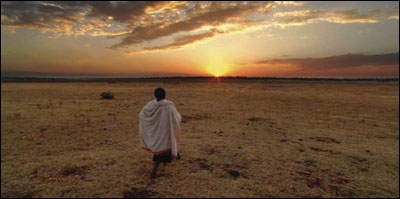

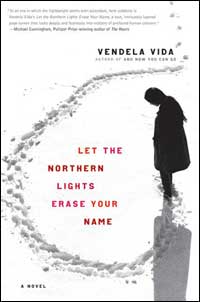



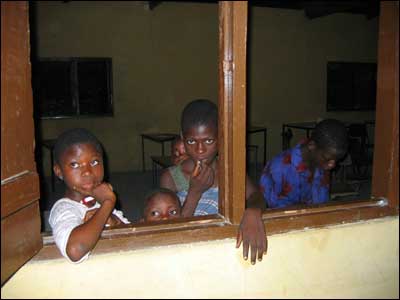
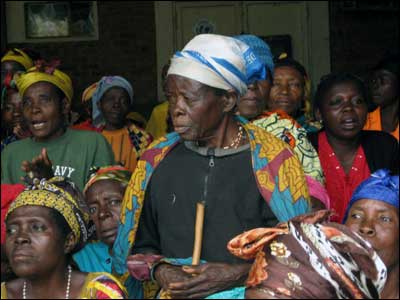
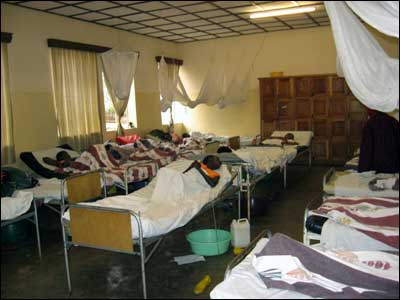
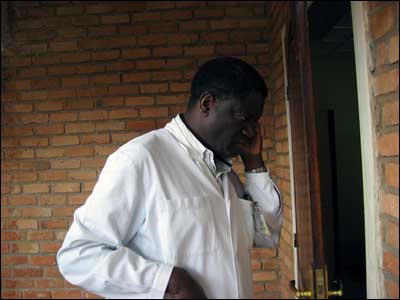






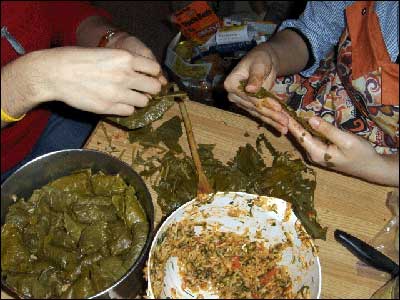
 To learn about my heritage, I took classes in Arab politics and history. But they couldn’t make up for what I’d missed in the kitchen.
To learn about my heritage, I took classes in Arab politics and history. But they couldn’t make up for what I’d missed in the kitchen. 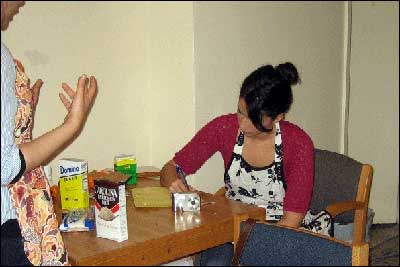

 A woman’s struggle to face down social anxiety disorder.
A woman’s struggle to face down social anxiety disorder. 
 An attempt at silence.
An attempt at silence. 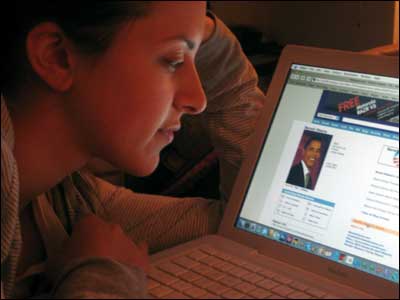
 The feeling was mutual, when it came to getting fired up.
The feeling was mutual, when it came to getting fired up.